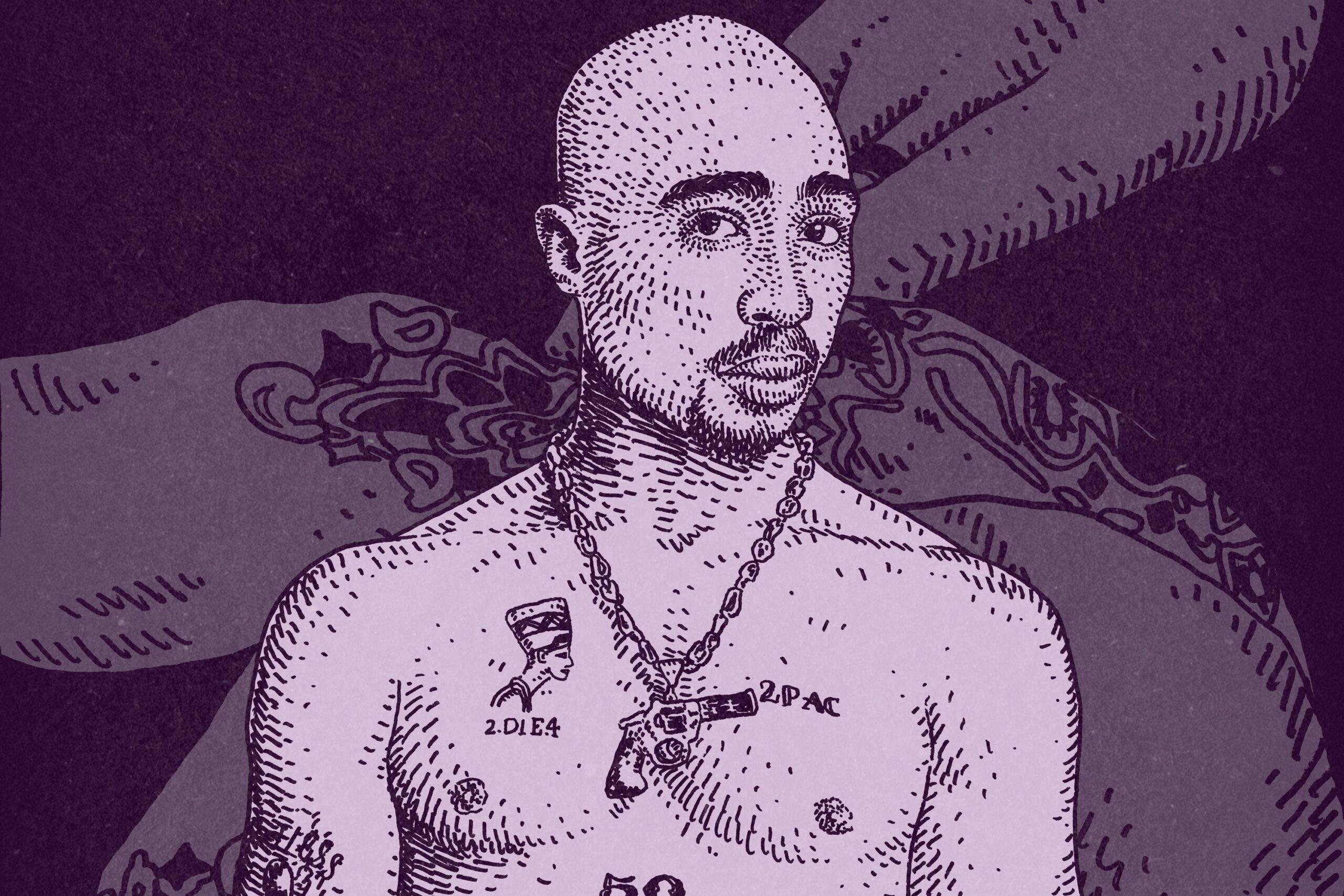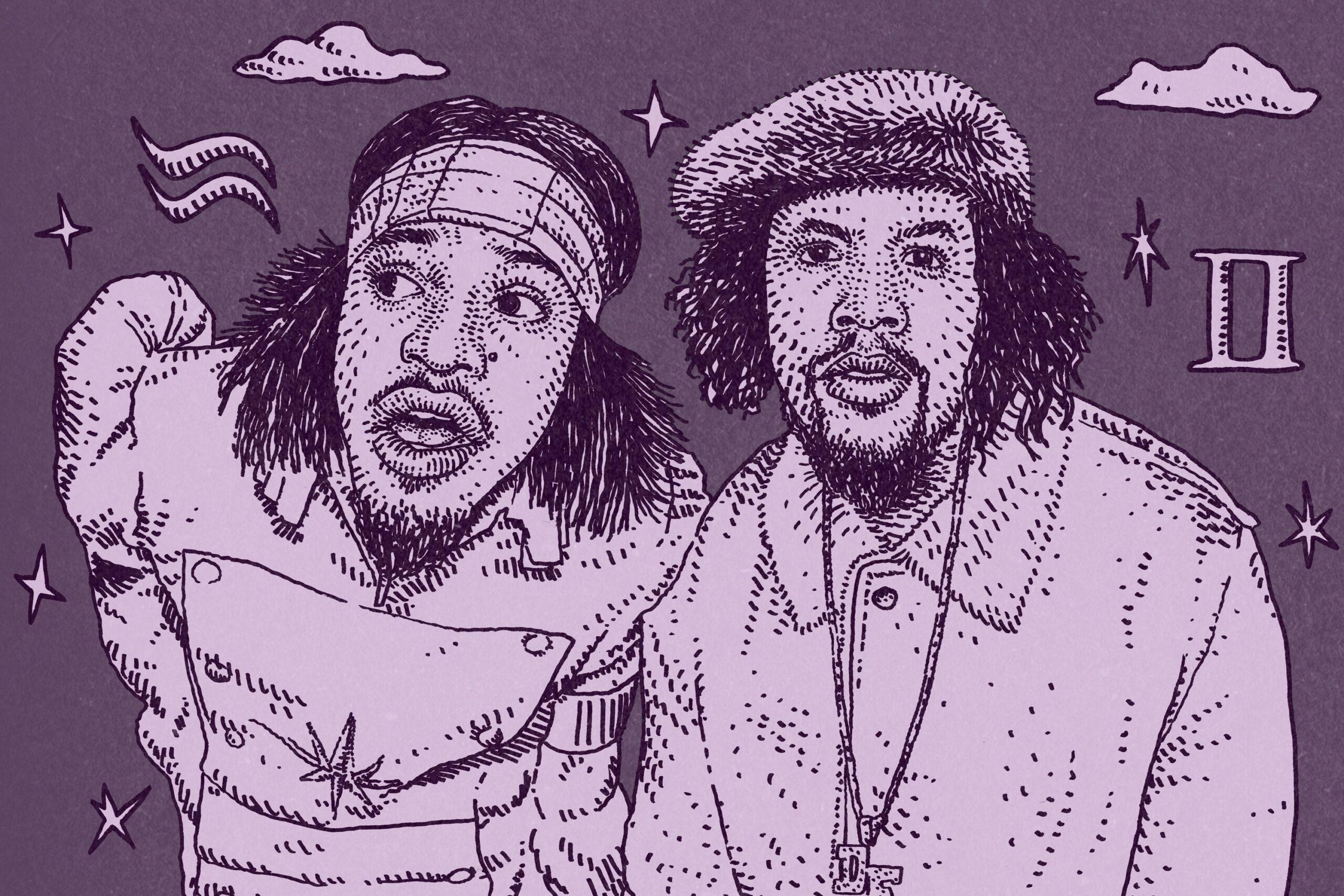Thirty years ago Friday, one of the most consequential days in modern music history occurred when Nirvana, A Tribe Called Quest, Red Hot Chili Peppers, and Soundgarden all released seminal albums. To celebrate the occasion, we’re looking back on September 24, 1991, by diving into the legacy of Nevermind and The Low End Theory, plus using math to determine whether any other release day in the past three decades stacks up.
It’s something Gen Xers and old millennials will tell their grandkids about: the hallowed release date. Every week—typically on Tuesdays in the U.S. before the advent of Global Release Day—thousands would schlep to their local mom-and-pop or chain store and plop down between $10 and $20 for an actual, physical copy of an album. And if the release was big enough, record stores would open at midnight so fans could grab the album as soon as it could contractually go on sale.
“Sure, grandpa, let’s get you to bed,” you say, but seriously: Before the first widespread MP3 leaks—and the arrival of new music delivery playlists like Release Radar on Spotify (The Ringer’s parent company)—those drop dates meant something to many. It was a release for fans and the culmination of months of hype: It was time to finally hear whether the new music of a beloved artist lived up to your hopes. Often in the CD era, it didn’t—who among us hasn’t paid $18.99 for an LP with two hot singles and 14 tracks of filler? But occasionally, the album was worth the price. And if you were really lucky—or unlucky, if you had a budget—there’d be more than one album on the same day that demanded your hard-earned cash.
To say September 24, 1991, is one of those instances that called for divided attention is something of an understatement. In the U.S., that day saw the release of three undeniable classics—Nirvana’s Nevermind, A Tribe Called Quest’s The Low End Theory, and Red Hot Chili Peppers’ Blood Sugar Sex Magik—plus heralded releases by Soundgarden and the Pixies. (Also a late-period record by Van Morrison, if you’re being a completist.) Subjectively, it’s considered one of the greatest release dates in history—perhaps even the absolute best.
But subjective isn’t good enough for us here at The Ringer. We wanted to prove whether that September 1991 day is in fact the most important date in modern album history, or whether there were any that surpassed it. So we devised a formula that accounts for both commercial performance and critical accolades in hopes of arriving at a conclusion. The idea was to find dates with multiple high-impact releases that have stood the test of time. We started with 1991—roughly the start of the SoundScan era, which changed how record sales were accounted for and much of what we knew about popular music—and ran through the present, singling out days with several big-ticket releases. We ended up with about 100 days across 30 years. (An early finding from that initial list we probably didn’t need a study for: Major artists typically stay clear of each other’s release dates, which makes jam-packed days kinda rare.) From there, we measured each album by five categories:
- RIAA certifications, giving it a half point for a gold plaque and one point for every platinum level it reached (a record that went two times platinum would get two points, and so on).
- Billboard 200 peak, giving an album five points for a top-10 placement (with two extra points for a no. 1 peak), four points for nos. 11-20, three points for nos. 21-30, two points for nos. 31-40, and one point for nos. 41-50.
- Number of top-10 singles in the Billboard Hot 100, with one point for each one (three for a no. 1 song).
- Ranking on the chart-aggregation website Best Ever Albums, which uses more than 50,000 critic and user charts to determine the best albums, well, ever. Since BEA also tracks by year, we awarded 15 points if the album is listed as the top in its release year, 10 points if it landed no. 2 through 10, nine points for 11 through 20, eight points for 21 through 30, and so on and so forth through 91-100, which netted it one point.
- And lastly, Grammy nominations and wins for the album or any of its songs. A nomination is worth one point, while a win is worth three.
Also, before we get to the list, some ground rules, lest we end up with some results that don’t fully capture the way we listen to and think about music:
- We’re looking at only U.S. figures and charts, and for albums that have different international release dates, we’re defaulting to the U.S. one.
- A day has to have multiple albums with RIAA certifications. We don’t want this to look like a Pazz and Jop poll.
- The day has to have an album that ranks within the top 30 of its year on BEA. This shouldn’t be hard—three of the September 24 albums rank in the top 10 for 1991.
- At least one of those top-30 albums has to have gone gold or platinum. We love critics here (some of us are critics), but for this exercise, we want our adored records to be widely listened to.
- No greatest hits; can’t have Aerosmith’s Big Ones skewing the results.
- No Christmas albums. Let’s be serious.
With all this in mind, we charted the 20 biggest release days in modern music history. The list below covers the biggest releases of that day, plus each date’s cumulative score and the key factors behind it. (For a more granular breakdown, here’s a spreadsheet of all of our findings.) You’ll notice that many of these dates fall within the 1990s—and none come after 2012. There are likely many contributing factors to that (file sharing, the rise of streaming and playlisting, surprise drops for big albums) but there’s seemingly one big takeaway: The album release date doesn’t hold the same power that it used to.
Before we really begin, let’s kick things off with a few honorable mentions:
The Commercial Tour de Force With No Critical Smash
November 14, 1995
Notable releases: Waiting to Exhale: Original Soundtrack Album, R. Kelly’s self-titled album, Melissa Etheridge’s Your Little Secret, Tracy Chapman’s New Beginnings, Meat Loaf’s Welcome to the Neighbourhood, the Pharcyde’s Labcabincalifornia
A massive day in terms of sales: the certifications for November 14, 1995, add up to 20 times platinum. The Waiting to Exhale soundtrack is the clear heavyweight, with more than 7 million records sold, five top-10 singles, and 11 Grammy nominations. But no record here has had the type of long-lasting critical impact we need for this exercise: The highest-ranking project on Best Ever Albums is the Pharcyde’s sophomore LP, which ranks at no. 89 for 1995.
The Day of Critical Darlings (and One Commercial Juggernaut)
March 23, 2004
Notable releases: Usher’s Confessions, Madvillain’s Madvillainy, N.E.R.D.’s Fly or Die, Joanna Newsom’s The Milk-Eyed Mender, Blonde Redhead’s Misery Is a Butterfly, Iron & Wine’s Our Endless Numbered Days
Only one record on this day was certified platinum: Usher’s Confessions, which went diamond. (That’s 10 million records sold, an almost unfathomable number in the current music climate.) And if we had included this date, it would’ve likely placed in the top three, thanks to Confessions’ sales, Grammy noms, and run of no. 1 singles, plus the critical success of the other releases. (Madvillainy is BEA’s no. 2 album for 2004, and both Iron & Wine and Joanna Newsom land in the top 20.) But it doesn’t sit right to have a date headlined by so many releases that failed to break through on a national level.

The Christmas Album That Wouldn’t Quit
November 1, 1994
Notable releases: Mariah Carey’s Merry Christmas, Nirvana’s MTV Unplugged in New York, Tom Petty’s Wildflowers, Megadeth’s Youthanasia
These are two major releases we’ve covered extensively at The Ringer from Nirvana and Tom Petty and a well-received Megadeth album—but the album with the biggest cultural footprint from this date is Mariah Carey’s Christmas album, which boasts the certified best holiday song of all time. If you get excited when it’s “All I Want for Christmas Is You” season, this is your date to celebrate. If those opening chimes send shivers down your spine, this is your date to curse. Either way, it’s staying off this list.
A Big Rap Day That Somehow Missed the Cut
June 18, 2013
Notable releases: Kanye West’s Yeezus, J. Cole’s Born Sinner, Mac Miller’s Watching Movies With the Sound Off
Best Ever Albums has Yeezus as the no. 2 album for 2013. Born Sinner doesn’t crack the top 100 while Watching Movies comes in at just 75. (A beloved indie release from that day—The World Is a Beautiful Place and I Am No Longer Afraid to Die’s Whenever, If Ever—comes in at 56.) With J. Cole and Kanye both landing at no. 1 on Billboard and Mac Miller peaking at no. 3, the only thing holding this day back was the lack of critical adoration. We’ll let you decide whether that’s the right call.
The Release Date Every Release-Date Article Has to Mention
September 11, 2007
Notable releases: Kanye West’s Graduation, 50 Cent’s Curtis
Take away the Rolling Stone cover and no one would remember this day. Kanye washed 50. The only question now is whether history would’ve been better off with the opposite outcome.
And now, without further ado, our official list:
20. November 16, 1999
Notable release: Dr. Dre’s 2001, Korn’s Issues, Will Smith’s Willenium, Kurupt’s Tha Streetz Iz a Mutha, Ani DiFranco’s To the Teeth
Why it’s ranked here: More than 11 million records sold, cumulatively, plus a lot of love for 2001
Score: 55
1999 has long been considered the peak of the recording industry, right before file sharing came into play and messed up the whole business plan. This exercise would seem to back that up: Six of our 20 dates fall between 1998 and 2000 and only four land in the past 20 years. November 16, 1999, sneaks in on the back of Dr. Dre—2001, his comeback record, went six times platinum and earned five Grammy nominations (with two wins). But we also got major releases from Korn and Will Smith (his last gasp of commercial success, at least as a musician), plus well-regarded records from Kurupt and Ani DiFranco. The date is a perfect snapshot of an industry celebrating the boom times, not knowing the bust was around the corner.
19. March 8, 1994
Notable releases: Soundgarden’s Superunkown, Nine Inch Nails’ The Downward Spiral, Gang Starr’s Hard to Earn, Insane Clown Posse’s Ringmaster, Elvis Costello’s Brutal Youth, John Frusciante’s Niandra Lades and Usually Just a T-Shirt
Why it’s ranked here: Two top-10 1994 albums, per Best Ever Albums
Score: 57.5
The Downward Spiral went four times platinum, while Superunknown went five times. I’m attributing that extra million to the “Black Hole Sun” video, which is etched into the brains of most everyone of a certain age.

T-17. October 31, 2000
Notable releases: Outkast’s Stankonia, Jay-Z’s The Dynasty: Roc La Familia, Lifehouse’s No Name Face, Godsmack’s Awake, Insane Clown Posse’s Bizaar
Why it’s ranked here: More than 10 million copies sold, cumulatively, plus a lot of accolades for Outkast
Score: 60
This wasn’t the first time Jay-Z and Outkast faced off on release dates (more on that later). But while Hov crushed the dungeon dwellers in sales on the initial go-around, Dre and Big Boi got the best of him both commercially and critically in 2000. And their album still sounds as futuristic today as it did then.
T-17. October 22, 2012
Notable releases: Taylor Swift’s Red, Kendrick Lamar’s Good Kid, M.A.A.D City
Why it’s ranked here: The biggest release of 2012 and its most critically acclaimed dropped on the same day.
Score: 60
In 2012, Kendrick was an upstart getting ready to release his first major-label album. Today, he’s one of the world’s biggest stars alongside Taylor thanks in no small part to the success of Good Kid, M.A.A.D City. (Taylor would call on Kendrick to beef up her next album release two years later.) In 2021, it’s nearly impossible to imagine these two ever dropping a record on the same day again.

16. February 13, 1996
Notable releases: 2Pac’s All Eyez on Me, the Fugees’ The Score
Why it’s ranked here: The two biggest rap albums of 1996 came out on the same day
Score: 61
The Fugees haven’t released an album since The Score, yet when news came this week that they were reuniting for a tour this year, the internet erupted. That’s what happens when you make an album this iconic.
15. August 30, 2005
Notable releases: Kanye West’s Late Registration, Death Cab for Cutie’s Plans, Thirty Seconds to Mars’ A Beautiful Lie, OK Go’s Oh No
Why it’s ranked here: Critics really love Kanye and Death Cab
Score: 62
Maybe this experiment was a mistake if the album with the treadmill song snuck on here.
14. October 3, 1995
Notable releases: Oasis’ (What’s the Story) Morning Glory?, Mariah Carey’s Daydream, Deftones Adrenaline
Why it’s ranked here: More than 15 million records sold in the U.S. between these three records—although two-thirds of that belongs to one
Score: 63
“Wonderwall” was the first ’90s song to pass 1 billion streams on Spotify. (Today, it’s at more than 1.2 billion.) But in 1995, at least in the States, the Gallagher brothers were basically small-time next to Mariah, whose Daydream spawned three no. 1 singles, earned six Grammy nominations, and has sold more than 10 million units to date. It may not be 1 billion streams, but here, it counts for more.
13. July 1, 1997
Notable releases: Puff Daddy’s No Way Out; Limp Bizkit’s Three Dollar Bill, Y’all; Men in Black: The Album, the Prodigy’s The Fat of the Land
Why it’s ranked here: Diddy selling a lot of records and turning a lot of old hits into new ones
Score: 67
The critics didn’t love Puff Daddy in 1997—No Way Out lands at no. 494 on the Best Ever Albums chart for the year—but everyone else did. Few artists have had as dominant a stretch as he did at the time, with four top-10 hits (and two no. 1s) coming from this album and another in steady rotation with Biggie’s “Mo Money Mo Problems,” which Puff guested on. But as much as naysayers disliked Puff for brazenly recycling proven hits, one sample-heavy record from this release date earned plenty of praise: The Fat of the Land by the Prodigy sits at no. 13 on the 1997 BEA chart. It also went double platinum in the U.S., a fact that seems more bizarre with every passing year as we become further removed from our national electronica nightmare.
12. November 23, 1993
Notable releases: Snoop Doggy Dogg’s Doggystyle, Ace of Base’s The Sign, Guns N’ Roses’ “The Spaghetti Incident?”, Elton John’s Duets, The Beavis and Butt-head Experience
Why it’s ranked here: Ace of Base sold a lot of records and pumped out a lot of hits
Score: 68
Let’s set aside Ace of Base, Sweden’s biggest musical export outside of ABBA. Let’s also skip past Doggystyle, which set the first-week-sales record for a debuting artist. I want to talk about The Beavis and Butt-Head Experience, which somehow went double platinum. If you ever need proof that the record companies had it too good in the ’90s, look to the fact that about 2 million people went out and purchased an album that contained “Come to Butt-Head.” Wild times.
11. November 9, 1993
Notable releases: Wu-Tang Clan’s Enter the Wu-Tang (36 Chambers), A Tribe Called Quest’s Midnight Marauders, R. Kelly’s 12 Play, Dave Matthews Band’s Remember Two Things, Celine Dion’s The Colour of My Love
Why it’s ranked here: Two of the best rap albums in history squaring off
Score: 69
The two biggest-selling albums here, 12 Play and The Colour of My Love, aren’t the main draw—it’s 36 Chambers and Midnight Marauders going head to head. If you have to give the edge to one, it goes to the Wu-Tang debut—it not only sold more and helped redefine the sound of rap, it introduced us to a fully realized world and mythology unrivaled in the genre’s history. But unlike walking into a record store in 1993, you don’t have to choose one or the other—both are available right now to anyone with a streaming subscription. And maybe that’s one way things have changed for the better.
10. September 29, 1992
Notable releases: Stone Temple Pilots’ Core, Alice in Chains’ Dirt, Peter Gabriel’s Us, Chanté Moore’s Precious
Why it’s ranked here: Three albums in the Best Ever Albums’ top 30 of 1992, including one that may surprise you
Score: 69.5
If you were conscious in the early ’90s, seeing a release date with the seminal grunge albums Core and Dirt on this list won’t shock you. But let’s not sleep on Peter Gabriel’s Us, which peaked at no. 2 on the Billboard 200—higher than Stone Temple Pilots or Alice in Chains—and earned six Grammy noms and two wins (for videos, but still). And while Core and Dirt both placed highly on the BEA list for the year (11 and 4, respectively), Us clocks in at a respectable no. 27. Music may have been changing around him, but Gabriel could still wield the commercial sledgehammer when he wanted to.

9. June 13, 1995
Notable releases: Alanis Morissette’s Jagged Little Pill, Björk’s Post, Paula Abdul’s Head Over Heels
Why it’s ranked here: A 16-times-platinum record and another classic
Score: 70.5
That this date would be ranked so high with only three major releases speaks to the power of Jagged Little Pill, one of the most dominant albums of the past 30 years. The record has sold 33 million copies worldwide since its release, and Best Ever Albums has it as the seventh best of 1995 (and no. 69 of the decade). It is, however, trumped in that regard by its release-date sister, Post, which comes in at no. 5 on that chart despite being dwarfed in sales.
8. November 22, 2010
Notable releases: Kanye West’s My Beautiful Dark Twisted Fantasy, Nicki Minaj’s Pink Friday, My Chemical Romance’s Danger Days: The True Lives of the Fabulous Killjoys, Lloyd Banks’s H.F.M. 2 (The Hunger for More 2), Robyn’s Body Talk
Why it’s ranked here: Love from the critics (and the Academy) for Kanye and Nicki
Score: 76.5
This is one of the lowest-selling days on the list, but one of the most critically lauded ones, thanks mostly to the release of My Beautiful Dark Twisted Fantasy. But Nicki Minaj’s debut album coming out the same day raises a big question: Did her career peak at the very beginning? Her verse on “Monster” was one of the most praised of the 2010s, and “Super Bass” is one of her highest-charting singles as the lead artist with only “Anaconda” faring better. She’s of course still relevant—and bar for bar, still one of the best rappers on the planet when she turns it on—but as we end the second week of discourse about her cousin’s friend’s balls, it’s clear that a lot of time has passed since this release date.
7. September 17, 1991
Notable releases: Guns N’ Roses’ Use Your Illusion I and II, Mariah Carey’s Emotions, Ozzy Osbourne’s No More Tears, Hole’s Pretty on the Inside
Why it’s ranked here: GNR’s shenanigans
Score: 78
You have to admire the gumption: The biggest rock band in the world decided to take a double album and turn it into two separate releases. Each went seven times platinum. One peaked at no. 1 on the Billboard 200, while the other reached no. 2. The move showed off the full power of GNR, and 30 years later, we’re still feeling the impact—at least in this list. By separating the Use Your Illusions, Axl and Co. get credit not only for two top-10 Billboard albums, but also for two top-25 albums on the Best Ever Albums’ charts. Of course, if you believe the narratives about the death of hair metal and the ’80s, you’ll understand this was likely the last possible moment GNR could’ve pulled off this maneuver; just one week later, Nevermind hit the shelves.
6. September 27, 1994
Notable releases: Dave Matthews Band’s Under the Table and Dreaming, Brandy’s self-titled debut, R.E.M.’s Monster, the Pulp Fiction soundtrack, Luther Vandross’s Songs, Slayer’s Divine Intervention, Ween’s Chocolate and Cheese, Soul Coughing’s Ruby Vroom
Why it’s ranked here: A cumulative 19-times platinum makes up for all the DMB haters
Score: 83.5
This date nearly didn’t qualify for this exercise—the highest-ranking album on the Best Ever Albums 1994 list is R.E.M.’s Monster, which sits at 27. But I personally can’t think of a release slate that better sums up its decade than this one’s grab bag of dorm-room classics, indie curiosities, pop-R&B behemoths, and John Travolta movie dialogue for good measure.

5. February 23, 1999
Notable releases: Eminem’s The Slim Shady LP, TLC’s FanMmail, the Roots’ Things Fall Apart, Jimmy Eats World’s Clarity, Sleater-Kinney’s The Hot Rocks, Prince Paul’s A Prince Among Thieves
Why it’s ranked here: TLC being an unstoppable force in the second half of the ’90s
Score: 88
A day full of important releases, including Eminem’s major-label debut, the Roots’ magnum opus, and Jimmy Eats World’s highly influential Clarity. But one album pushes this date up so high: TLC’s FanMmail, a record that boasted two no. 1 singles in “No Scrubs” and “Unpretty” and earned six Grammy noms (two wins). It’s easy to forget now, years removed from their peak, but the Atlanta trio is the biggest-selling American all-woman group in history. They made a lot of people rich and got a pretty bad shake from the record industry—something worth keeping in mind as we celebrate all these achievements.
4. September 11, 2001
Notable releases: Jay-Z’s The Blueprint, Nickelback’s Silver Side Up, Fabolous’s Ghetto Fabolous, Mariah Carey’s Glitter, P.O.D.’s Satellite, Bob Dylan’s Love and Theft, the Microphones’ The Glow Pt. 2
Why it’s ranked here: Three albums in the Best Ever Albums’ 2001 top 20; six albums that peaked in the Billboard 200’s top 10
Score: 92.5
Admittedly a strange date to see on this list given that the country had bigger concerns than a Nickelback album, but albums from this day have been certified a total of 13 times platinum, and both The Blueprint and The Glow Pt. 2 rank in the BEA top 10 for 2001. (One thing worth noting: Mariah, who had helped carry release dates lower down on this list in 1991 and 1995, barely registers here, going just one time platinum with the soundtrack for her derided film Glitter. She’d eventually bounce back with 2005’s six-times platinum The Emancipation of Mimi.)
3. September 12, 2006
Notable releases: Justin Timberlake’s FutureSex/LoveSounds, John Mayer’s Continuum, the Black Keys’ Magic Potion, Plain White T’s’ Every Second Counts, Yo La Tengo’s I Am Not Afraid of You and I Will Beat Your Ass, the Mars Volta’s Amputechture
Why it’s ranked here: Justin and John, mainly
Score: 95.5
At first blush, it may be odd to see a day headlined by FutureSex/LoveSounds and Continuum ranked so highly, but both sold a lot (four times platinum apiece), rank highly on the Best Ever Albums chart for 2006 (26 and 16, respectively), and, most importantly, cleaned up at the Grammys (11 noms and six wins between them). For bonus points, the day also includes great Black Keys and Yo La Tengo albums plus the record that includes “Hey There Delilah”—the only song here to join Justin’s three no. 1s as Billboard Hot 100 toppers. Is that enough to make this one of the biggest release dates of the past three decades? According to our formula, yes.

2. September 29, 1998
Notable releases: Outkast’s Aquemini, Jay-Z’s Vol 2 … Hard Knock Life, Mos Def and Talib Kweli’s Black Star, A Tribe Called Quest’s The Love Movement, Mercury Rev’s Deserter’s Songs, Shakira’s ¿Dónde Están los Ladrones?, Unkle’s Psyence Fiction, PJ Harvey’s Is This Desire?, Sheryl Crow’s The Globe Sessions, Soul Coughing’s El Oso
Why it’s ranked here: Four albums that peaked in the Billboard top 10, plus three that ranked in Best Ever Albums’ top 20 for 1998.
Score: 96.5
We’ve written about this day as an all-time rap release date: It includes Aquemini, the crown jewel of Outkast’s mighty discography; Jay-Z’s commercial breakthrough, Vol. 2; Black Star, one of the most important indie hip-hop releases in history; and what was to be the final Tribe album before 2016’s We Got It From Here … Thank You 4 Your Service. But September 29, 1998, also includes a few dorm-room classics (Unkle, PJ Harvey), a critically lauded album (Mercury Rev), a record with five Grammy noms (Sheryl Crow), a platinum-selling Spanish-language album (Shakira), and a used-bin staple (Soul Coughing). The sheer volume of big releases may have put this day on a path to no. 1 if not for the one boulder standing in its way …
1. September 24, 1991
Notable releases: Nirvana’s Nevermind, A Tribe Called Quest’s The Low End Theory, Red Hot Chili Peppers’ Blood Sugar Sex Magik, the Pixies’ Trompe le Monde, Soundgarden’s Badmotorfinger, Van Morrison’s Hymns to the Silence
Why it’s ranked here: Four albums in Best Ever Albums’ top 15 for 1991 (including the no. 1 album), more than 20 million records sold in the U.S. alone.
Total score: 100.5
OK, maybe we could’ve skipped this exercise and simply crowned September 24 from the beginning. It was always going to be hard to beat a day that had three stone-cold classic releases and two others from beloved bands (plus Van Morrison). This isn’t the strongest commercial day on this list—only Nevermind hit no. 1 on the Billboard chart (and it took about three months to get there), and only “Smells Like Teen Spirit” and “Under the Bridge” cracked the top 10 of the singles chart—but what it lacks in chart performance, it makes up for in legacy. Nevermind and The Low End Theory are both on the short list for the best albums to ever come out of their genres, and Blood Sugar Sex Magik is likely the best album from one of the most important bands of the last 40 years. When you factor in how the very concept of the release date has lost power, it’s not unreasonable to suggest that there may never be a day that challenges this one. We’ll check back in in another 30 years to be sure, but don’t be surprised if this one still tops the list.
Thanks to Abou Kamara and Julianna Ress for research assistance and patience in this exercise.
